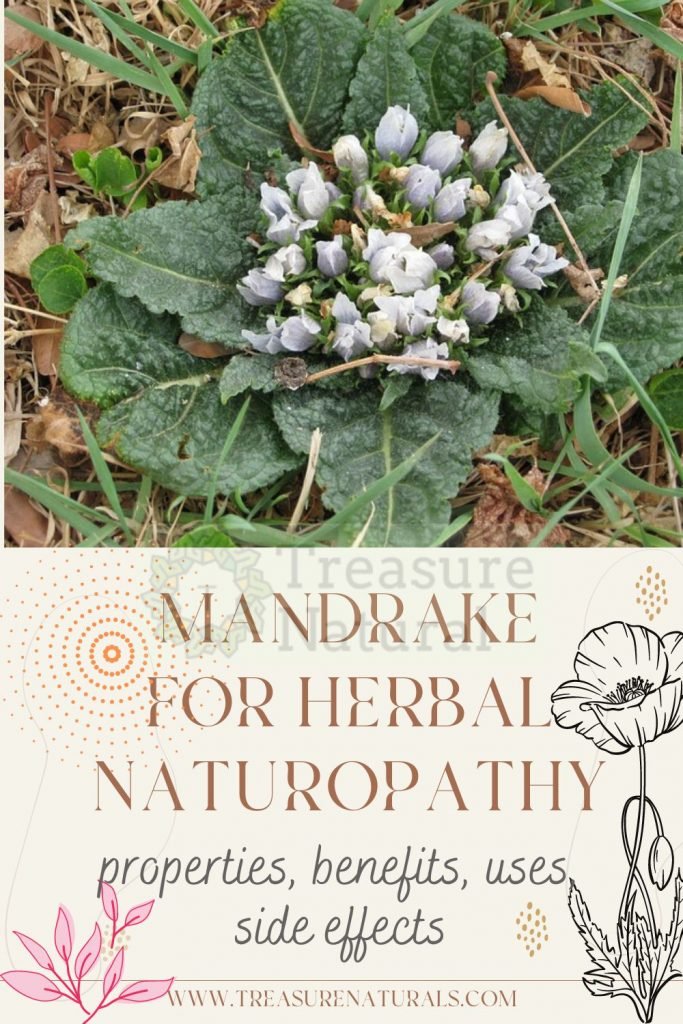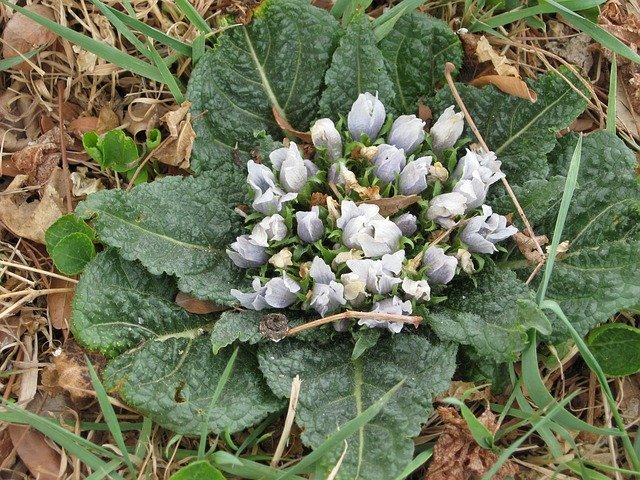
Mandrake is a toxic plant once used as an analgesic, hallucinogen, sedative and aphrodisiac.
Always accompanied by superstitions and considered magical, the mandrake today is no longer used in the medical and phytotherapeutic field due to its high toxicity.
Mandrake, description of the plant
The mandrake, also called “mandrake”, is a toxic plant of small medium size belonging to the Solanaceae family, present in the spontaneous state also in our country.
The mandrake plant has a rosette of basal leaves, whole or toothed, from which greenish, blue or light purple flowers sprout. After flowering, inedible yellow and fleshy berries originate from the flowers.
The roots of mandrake have in fact a particular vaguely anthropomorphic forked appearance from which probably derive the many legends and superstitions that accompany this plant since ancient times.
Where the Mandragora plant grows
The Mandragora officinarum is widespread in northern Italy, while in the south is the Mandragora autumnalis. The mandrake plant generally grows in fallow fields and along sunny paths. Both varieties can be easily confused with other edible species simili in appearance, including borage and wild spinach.
How to recognize the mandrake
To recognize the mandrake plant it is necessary to keep in mind that, compared for example to the borage, this species forms basal rosettes of hairless leaves and the flowers are not carried by stems but develop from the ground.
Compared to other species that bloom in spring or summer, the mandrake blooms in autumn with bell-shaped flowers and subsequently forms yellow berries.
What is unmistakable of the mandrake is the rhizome, but it is not appropriate to eradicate plants in nature in order to verify their identity.
To recognize the mandrake it is preferable to go to a botanical garden where it is present and observe the specimens during the various seasons, noting details useful for recognition in the spontaneous state.
What is mandrake root used for
Mandrake root is the drug of this plant and was once used for narcotic action and against pain. The rhizome of the mandrake contains several propane alkaloids including atropine, common to other Solanaceae such as Belladonna and characterized by high toxicity.
Mandrake, properties and effects
Mandrake is a hallucinogenic plant used since ancient times as a hypnotic, as a panacea for all ills and as an aphrodisiac. Despite what the sign theory claims, which attributes properties to a plant or parts of it according to its shape, the mandrake is more useful as an analgesic, sedative and narcotic, than as an aphrodisiac.
At one time, in fact, the extracts obtained from the mandrake such as the mother tincture of mandrake or mandrake oil were used in the treatment of pain, as well as to promote sleep and improve sexual performance.
Today the mandrake is no longer used either in the medical field or for phytotherapeutic purposes due to its high toxicity.
The compounds responsible for the effects of the mandrake are the tropane alkaloids present in all parts of the plant, especially in the rhizome. The subjects most at risk are children, the elderly, people with previous pathologies, but the consumption of mandrake remains dangerous for anyone.
Ingestion of mandrake root causes intoxication that causes gastrointestinal pain, vomiting and tachycardia.
Beyond a certain amount, the consumption of mandrakes can lead to visual and auditory hallucinations, seizures, memory loss and sexual arousal. In severe cases intoxication can lead to coma and death.
Mandragora, mythology and legends

Always considered a magical plant, the mandrake the collection of the mandrake is traditionally linked to superstitions and associated with death.
According to the legends about the mandrake, well investigated also by the scientific community, the plant would have developed from drops of sperm or urine of a condemned to death. For this reason, it was once believed that if a person eradicated the mandrake root, he would go crazy and die because of the screams of the emitted by the plant and coming from the evil spirit of the hanged.
To avoid this, the root could only be harvested respecting a particular ritual that involved a very strict procedure. First it was necessary to draw three circles around the plant,using an iron sword or a branch of willow.
The earth was then softened with a woman’s urine and the root could later be uprooted by a virgin. Alternatively, the harvest could be carried out by a black dog, on Fridays at dusk.
The collector, accompanied by the hungry dog, always had to soften the earth with female urine, then proceeded to tie the plant to the tail or neck of the animal.
They place food away from the plant, the hungry dog would have uprooted the plant: the scream emanating from the mandrake would then kill the dog but spare the collector.
According to other legends, the mandrake root had to be harvested by the seventh year of age, to prevent a human embryo from being born from the rhizome of the plant. After harvesting, the mandrake root was purified by washing it in red wine and wrapping it in a white and red silk stole.
After harvesting, the root then had to be fed with semen and blood to increase its aphrodisiac properties.






